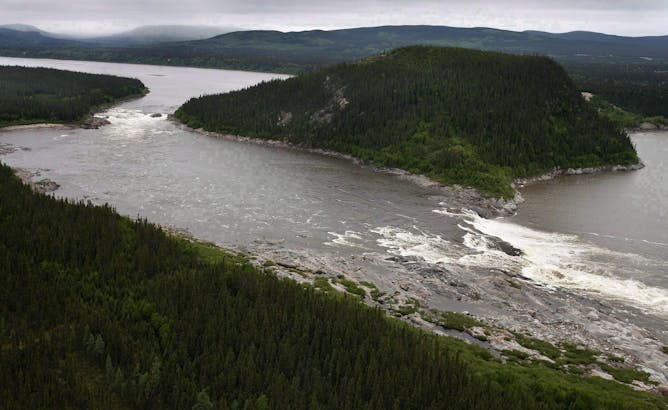|
Today in The Conversation Canada, we turn the spotlight on our own industry – the news media.
The role of the media has been front and centre ever since Prince Harry and Meghan Markle gave up their official royal duties and moved to Canada. Shana MacDonald of the University of Waterloo looks at the negative media treatment Meghan has received since her romance with Prince Harry became public in 2016. She is just the latest woman “to experience negative media coverage and shifting public opinions once entering the Royal Family.”
Negative media coverage of Canada’s Indigenous Peoples has been around for as long as newspapers have existed in this country. Have things improved? Chad Walker of the University of Exeter is part of a research team that analysed how media has recently portrayed the involvement of Indigenous communities in renewable energy projects across Canada. This story is part of our ongoing series on the Truth and Reconciliation’s Calls to Action.
Also today:
Regards,
|

The Duke and Duchess of Sussex attend the annual WellChild Awards in London in October 2019.
(Toby Melville/Pool via AP)
Shana MacDonald, University of Waterloo
If we're ever to move past outmoded values of gender, race and class, we need to wish Prince Harry and Meghan Markle well — and challenge those who would prefer everything remains the same.
|

Muskrat Falls on the Churchill River in Labrador, in February 2011.
THE CANADIAN PRESS/Paul Daly
Chad Walker, University of Exeter
The mainstream news media has been biased in its reporting and portrayal of Indigenous Peoples on stories about renewable energy projects. What and how can they do better?
|

Some lakes in the Arctic are expanding and others are disappearing as permafrost thaws.
This lake north of Inuvik, N.W.T., is expanding as the ice wedges (darker lines leading away from the lake) around this lake melt and the ground subsides.
(Philip Marsh)
Philip Marsh, Wilfrid Laurier University; Evan Wilcox, Wilfrid Laurier University; Niels Weiss, Wilfrid Laurier University
Hundreds of thousands of lakes, rivers and streams in the Arctic exist only because of the permafrost that lies beneath them. The warming Arctic threatens to change that.
|

Des manifestants tiennent des fleurs lors de protestations survenues le 11 janvier à l'Université Amir Kabir à Téhéran, en hommage aux victimes de l'écrasement du vol PS752. La police réplique avec des gaz lacrymogène. L'apparente unanimité qui a suivi l’assassinat de Soleimani s’est vite effondrée face à la présence de revendications populaires et d’un mécontentement général.
AP Photo
Vahid Yücesoy, Université de Montréal
L'apparente unanimité qui a suivi l’assassinat de Soleimani s’est vite effondrée face à la présence de revendications populaires et d’un mécontentement général. Les Iraniens protestent désormais contre leur régime.
|
Health + Medicine
|
-
Haitao Guo, University of Pittsburgh; Guangxiang “George” Luo, University of Alabama at Birmingham; Shou-Jiang Gao, University of Pittsburgh
A new coronavirus related to SARS and MERS has now traveled from China to the United States. A genetic analysis reveals that this deadly pathogen may have originated in snakes.
|
|
Politics
|
-
Mark Knights, University of Warwick
Impeachment was a common political tool in early modern England, but its use lapsed 20 years after it was adopted in the US constitution.
|
|
Culture + Society
|
-
Ryan Storr, Western Sydney University; Katherine Raw, Western Sydney University
Tennis Australia has faced criticism for its decision to celebrate Court's career next week. But at the same time, it's boosting its efforts at inclusivity with events like this year's Glam Slam.
|
|
Science + Technology
|
-
Adam Hawkey, Solent University
An expert explains the challenges of a mission to Mars for younger readers.
|
|